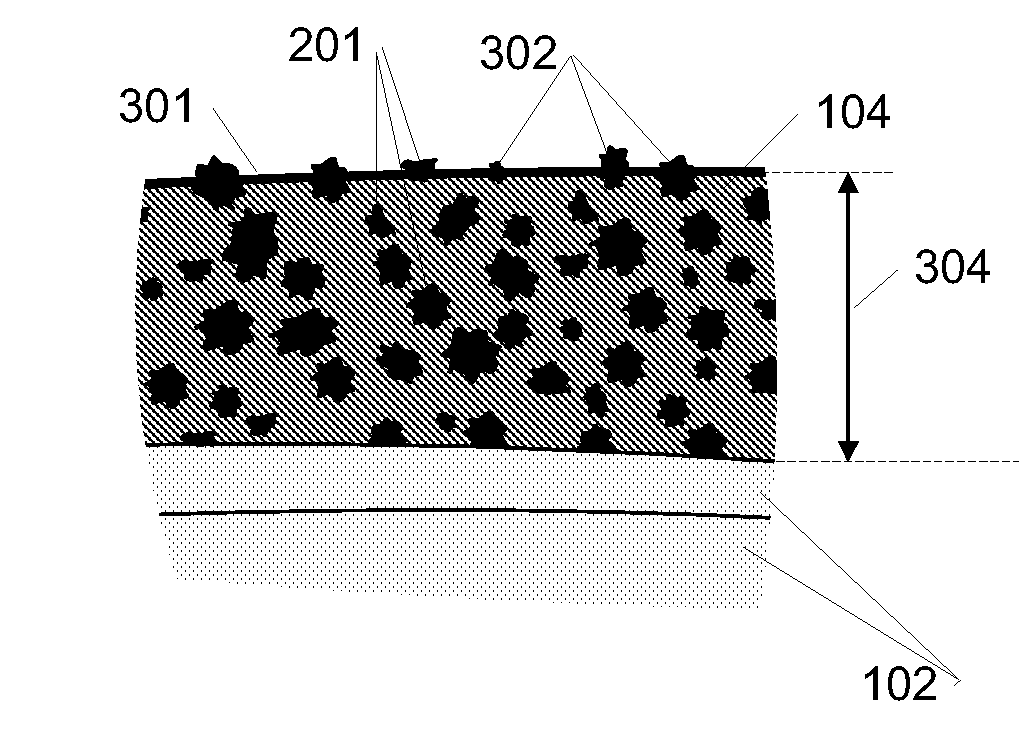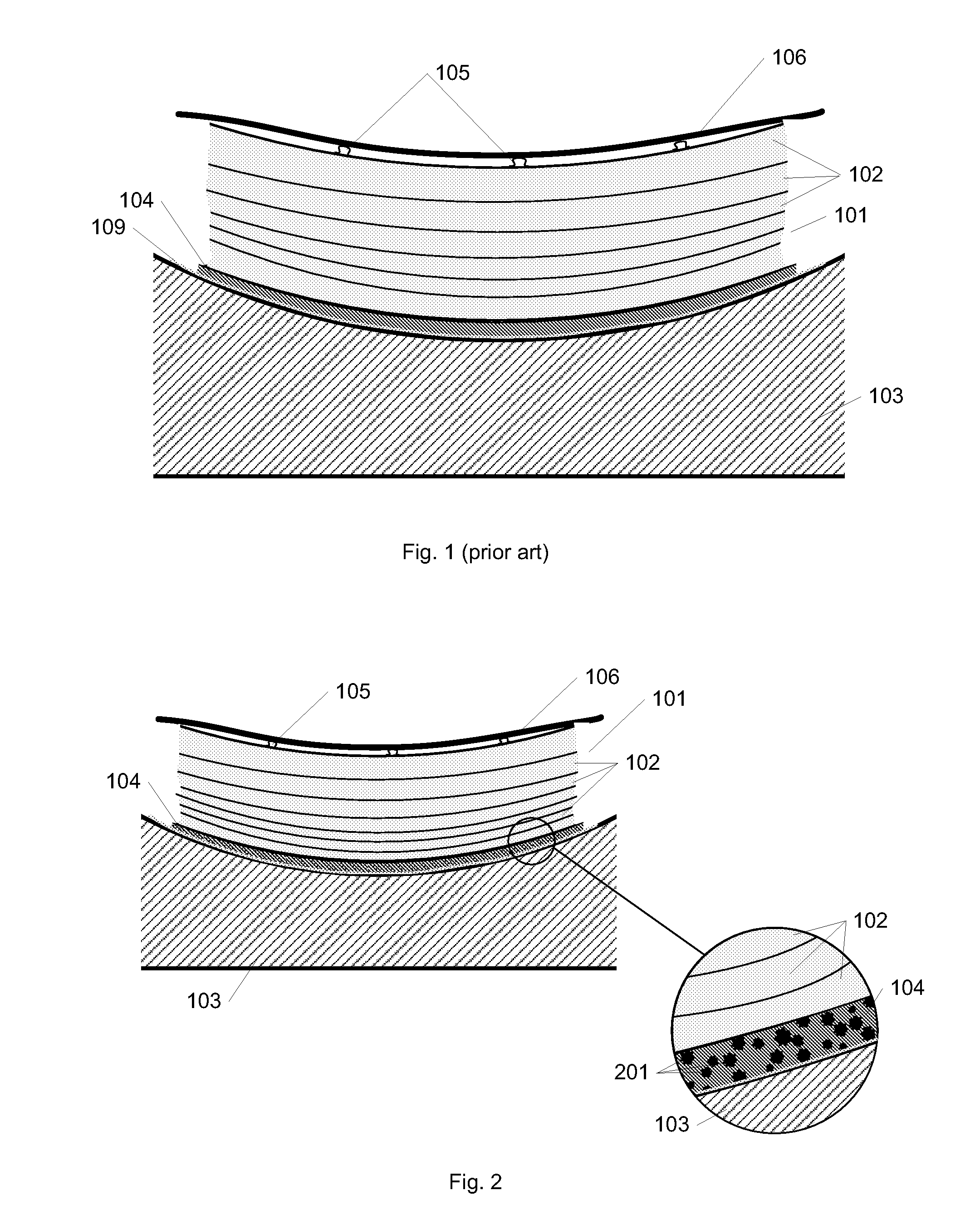Regenerating surface properties for composites
a composite and surface technology, applied in the field of composite member manufacturing, can solve the problems of prone to wear and tear of self-cleaning and dirt-repelling effect, impractical or perhaps even impossible procedure to perform, and very time-consuming and costly cases, so as to reduce the noise emitted by composite components, simple and easy renewal, and reduce the effect of fluid resistan
- Summary
- Abstract
- Description
- Claims
- Application Information
AI Technical Summary
Benefits of technology
Problems solved by technology
Method used
Image
Examples
Embodiment Construction
[0029]FIG. 1 illustrates the manufacture of a composite member or laminate 101 in this case by resin injection or infusion or by resin transfer moulding as known in the art. The material layers 102 in the laminate are here impregnated with resin totally or partly by means of vacuum. The production method is very used for instance in the production of parts for wind turbine blades, ships, vehicles etc.
[0030]The form part or mould 103 may first be coated on the inside with a waxy substance 109 to prevent adhesion between the moulded product and the mould. This waxed surface can be reused for more than one moulding processes before it needs to be reapplied. Thereafter, a layer of gelcoat 104 is applied to the surface and the gelcoat is allowed to gel. This gives a somewhat hard surface to the finished product with a high finish. A number of material layers 102 are laid in the mould 103, and in some areas a core material (e.g. balsawood) can be laid between the fibre layers as well, for...
PUM
| Property | Measurement | Unit |
|---|---|---|
| sizes | aaaaa | aaaaa |
| sizes | aaaaa | aaaaa |
| sizes | aaaaa | aaaaa |
Abstract
Description
Claims
Application Information
 Login to View More
Login to View More - R&D
- Intellectual Property
- Life Sciences
- Materials
- Tech Scout
- Unparalleled Data Quality
- Higher Quality Content
- 60% Fewer Hallucinations
Browse by: Latest US Patents, China's latest patents, Technical Efficacy Thesaurus, Application Domain, Technology Topic, Popular Technical Reports.
© 2025 PatSnap. All rights reserved.Legal|Privacy policy|Modern Slavery Act Transparency Statement|Sitemap|About US| Contact US: help@patsnap.com



